Bollard lights are commonly used in both architectural and landscape lighting. They serve functional and aesthetic purposes, providing pathway illumination, enhancing safety, and adding to the ambiance of outdoor spaces. In architectural settings, bollard lights can accentuate building entrances or other features, while in landscape lighting, they’re popular along pathways, garden beds, or around outdoor seating areas to highlight landscaping elements.”

Lighting a Path with Bollards
Bollard lights are versatile lighting fixtures designed primarily for pathway illumination. To create an efficient lighting design, it’s essential to understand different bollard styles, distributions, and specifications.
Factors in Bollard Pathway Lighting
For effective pathway lighting, consider bollard mounting height, spacing, and light direction. These elements influence overall design impact and achieve the required illuminance levels for safe, clear paths.
Choosing Mounting Heights
For pedestrian pathways, the illuminance level should be at least 0.1 footcandles (fc). Bollard height affects how light spreads; taller bollards allow for wider spacing, while shorter ones concentrate light close to the fixture, requiring closer spacing for consistent brightness.
Bollard Height Examples:
Small Bollards
Small Bollards (8 inches) emit bright light close to the fixture, needing 8-foot spacing for even light levels.
Medium Bollards
Medium Bollards (1.5 feet) offer more even distribution and a 15-foot spacing.
Large Bollards
Large Bollards (3 feet) provide uniform lighting across a broad area, allowing for 30-foot spacing.
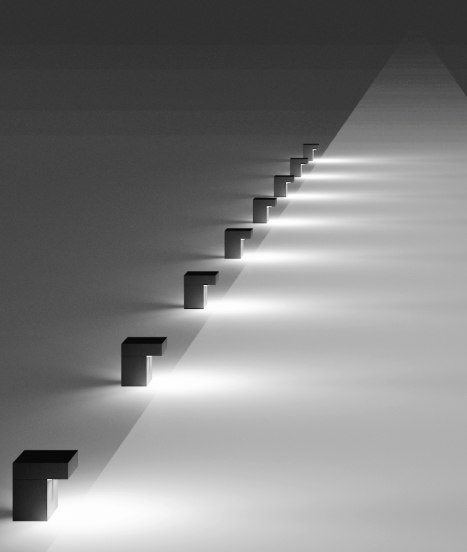

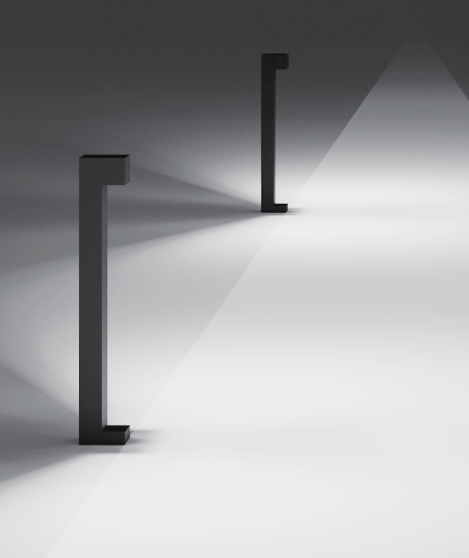
Spacing your Bollard Luminaires
To assess and compare bollard light distribution from above, isolines are used to show the point at which each fixture’s illuminance reaches 0.05 footcandles (fc) on the ground. This isoline is critical in determining the maximum distance between fixtures, ensuring the path has adequate lighting. For optimal spacing, slight overlapping of these isolines is recommended, as the combined illuminance in these areas reaches 0.1 fc, meeting the minimum lighting level required for safe pathway illumination.
In public spaces, uniform lighting is crucial for safety, especially on larger pathways common in these areas. Taller bollards are more suitable here, as they provide wider and more balanced illumination across expansive areas, ensuring visibility and comfort for pedestrians. In contrast, smaller bollards are typically better suited for residential or private settings, where pathways are narrower and more enclosed. This approach provides appropriately scaled lighting and maintains a harmonious aesthetic in each environment.
Small Bollard Aerial View

Medium Bollard Aerial View

Large Bollard Aerial View

Optimizing Light Direction for Park Pathways
In a pedestrian-only park pathway, unshielded bollard lights can provide even illumination for both the path and its surroundings. For balanced lighting, these bollards can be spaced 20 feet apart, maintaining a minimum light level of 0.05 footcandles (fc) on the pathway. This lower lighting level is suitable for non-emergency, pedestrian-focused paths that are level and separated from vehicle or bike traffic.
Vertical illumination is also key for enhancing safety and comfort by supporting facial recognition and creating an inviting ambiance. To achieve this, in-grade luminaires can be used to uplight trees, adding gentle ambient light that increases the overall sense of security and warmth for visitors.
Explore how different light distributions affect both the pathway and surrounding elements for improved lighting design and ambiance.
Types of Bollard Light Distributions
|
Shielded Light Shielded bollard lights direct illumination downward, focusing it around the base of the fixture. This downward orientation minimizes light spill above the horizontal plane, resulting in bright, concentrated light directly in front of the bollard that fades quickly to the sides. This distribution type ensures visual comfort, glare reduction, and uniform lighting in the immediate vicinity, making it ideal for pedestrian areas where focused lighting is preferred. |
Wide Beam Light Wide beam bollards distribute light to the sides rather than directly in front, producing a broad, even spread that covers larger areas without intense brightness at the fixture's front. These fixtures are often full-cutoff, restricting uplight for applications where minimal skyward light is needed. This distribution style is suitable for locations requiring uniform light coverage across wider spaces with fewer fixtures.
|
Unshielded Light Unshielded bollards provide a more ambient lighting effect with uniform light distribution in all directions. This style offers a high degree of vertical illumination, which enhances visibility for facial recognition and highlights nearby architectural or landscape features. Unshielded fixtures work well in settings where ambient, 360-degree illumination is essential for safety and ambiance, such as open walkways and gathering areas.
|
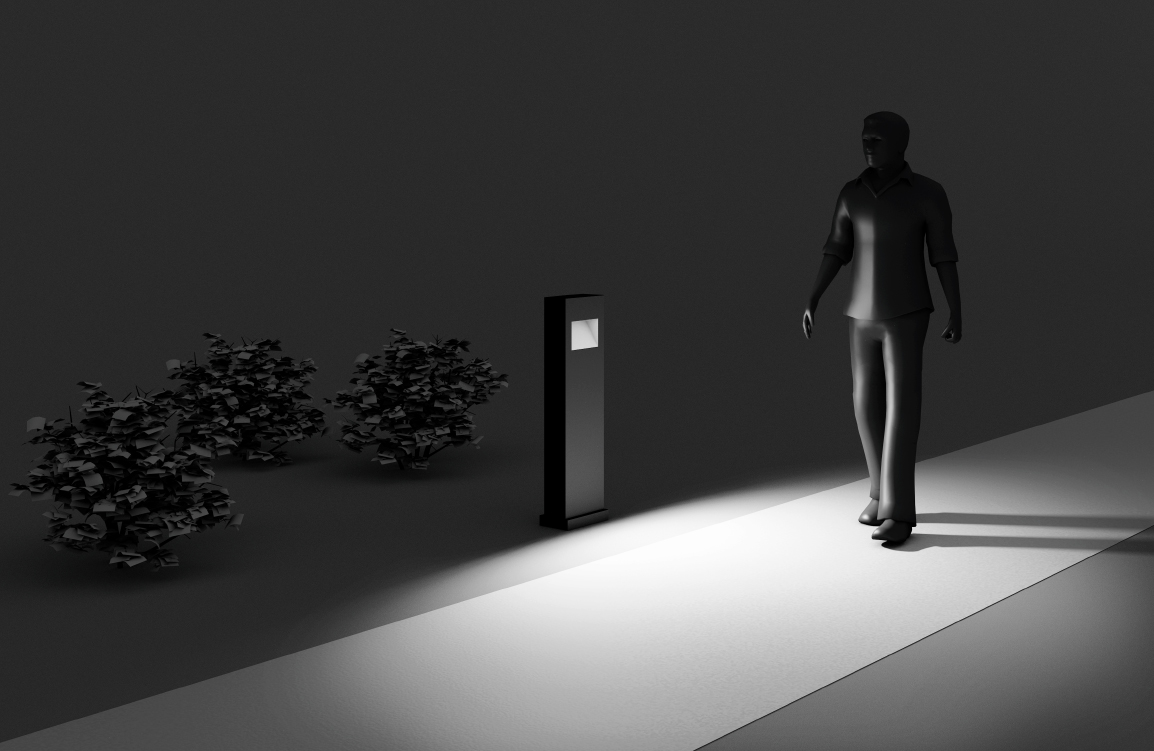 |
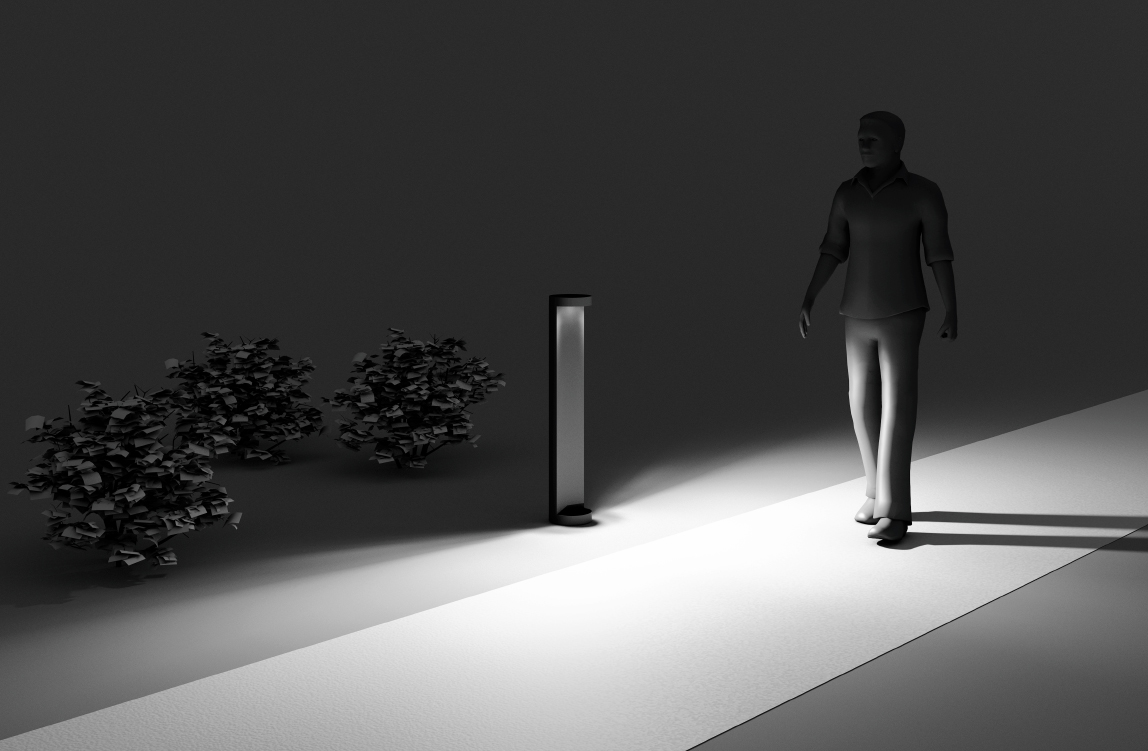 |
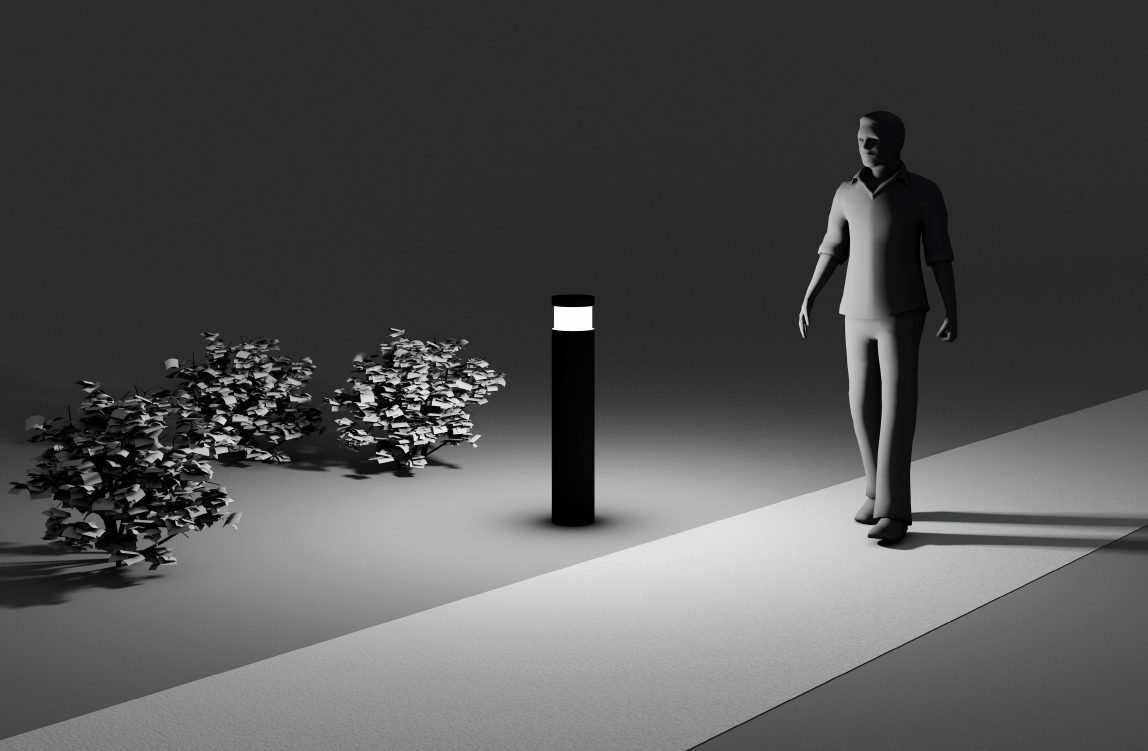 |
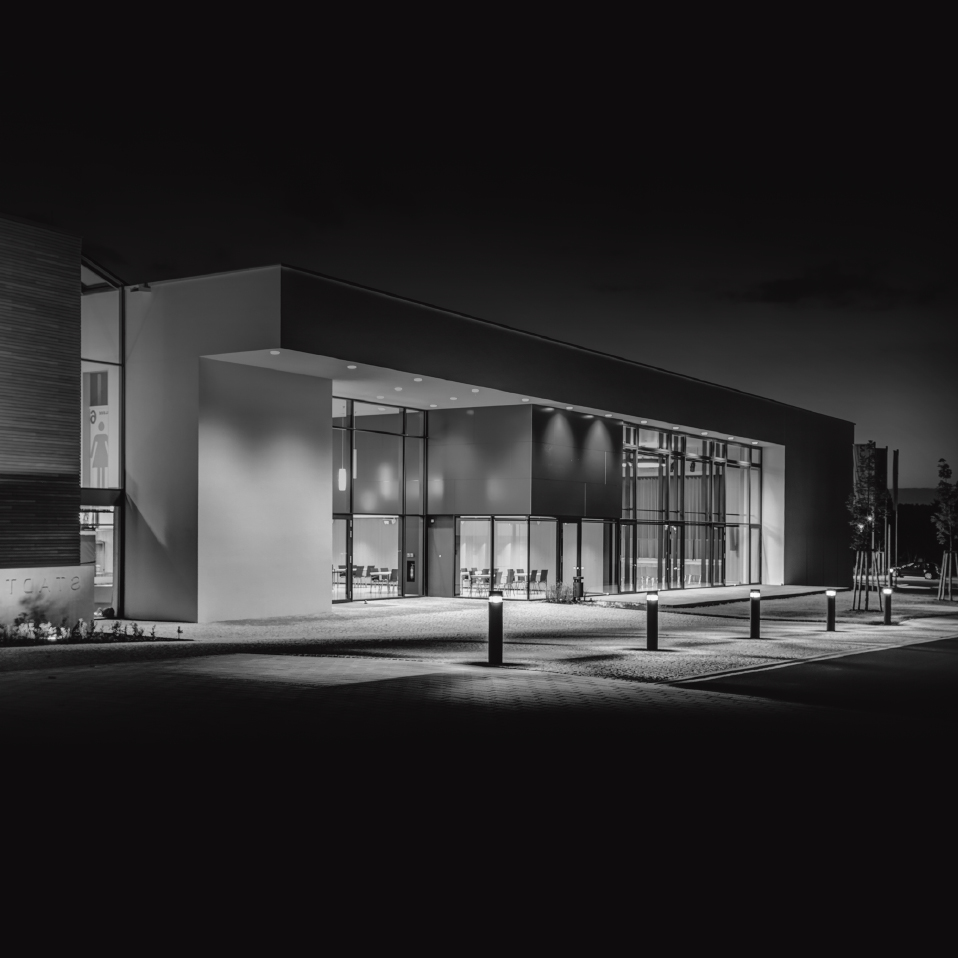 |
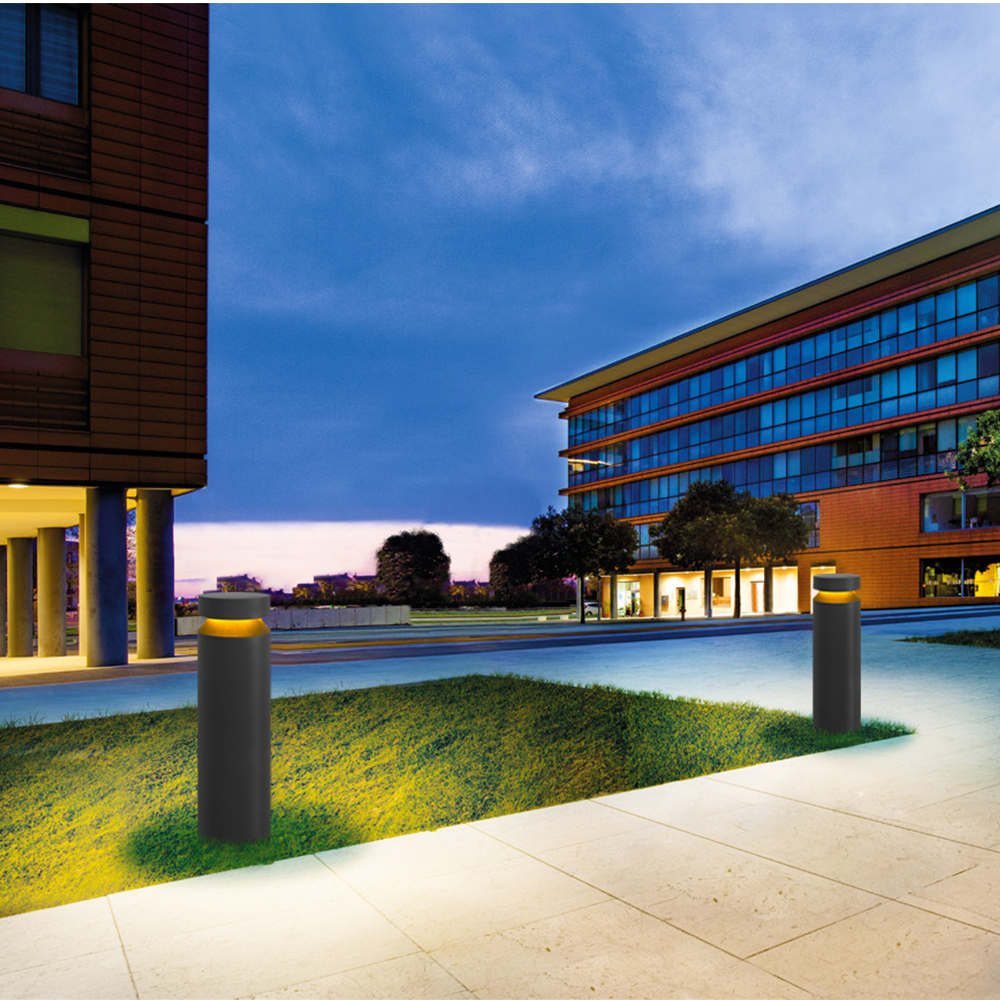 |
A lighting designer wants to use an asymmetric bollard to light a footpath. During planning they decide on a minimum illuminance level of 0.1 fc, and therefore reference the 0.05 fc line on the isofootcandle diagram. Based on this diagram, 10 ft from the bollard the illuminance on the pathway will be 0.05 fc. So, if another bollard is placed 20 ft from the first, the illuminance level between the two will add up to 0.1 fc.
|
Isofootcandle diagram example
